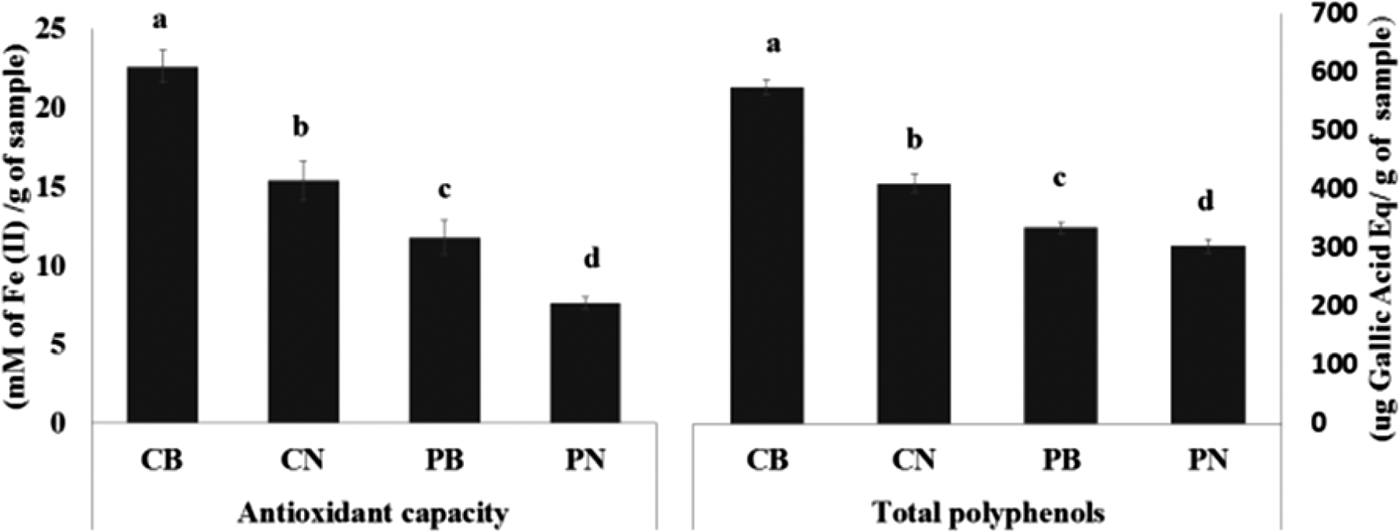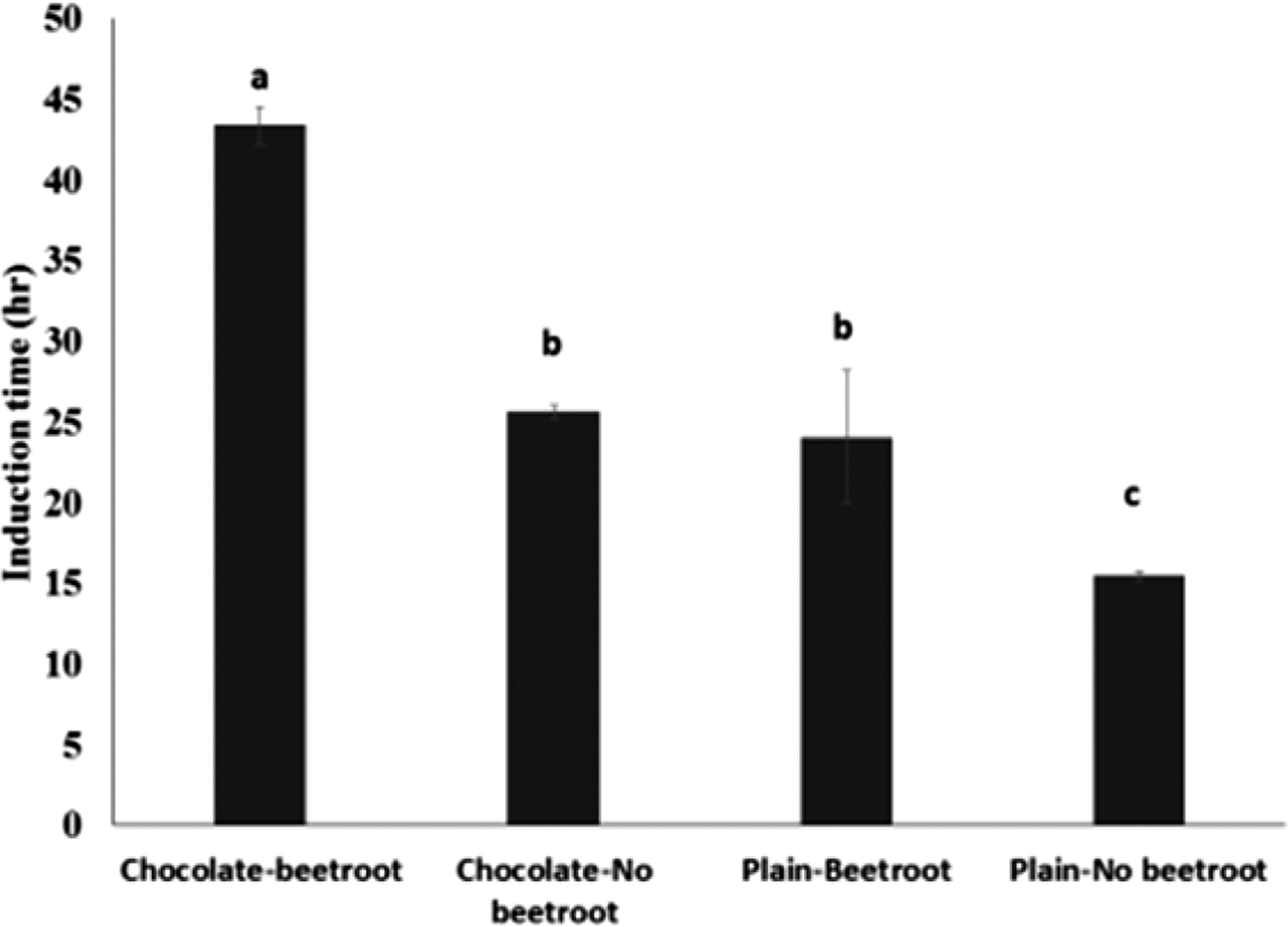Escalating consumer pressures for healthier foods is driving the demand for “clean label” products that are both nutritionally superior and all-natural. Most food products contain synthetic antioxidants despite consumer pressure to reduce their use. Oxidation adversely affects the organoleptic properties and shelf life of foods. More importantly, macronutrient oxidation also forms products that provoke morbidity by altering the biochemistry of cells and genes. Beetroot is rich in natural antioxidants that can retard oxidation reactions. This study assessed the efficacy of beetroot in curtailing oxidation reactions during storage and gastrointestinal digestion of cake, and its impact on nutrition, shelf life, storage attributes and sensory properties.
Plain and chocolate cakes were prepared with and without the addition of fresh beetroot that had been cooked and pureed (24 %). The four cakes (Plain (PN), Plain with beetroot (PB), Chocolate (CN) and Chocolate with beetroot (CB)) were then analysed for nutritional composition, antioxidant capacity (FRAP) and total polyphenols (Folin-Ciocalteu). Furthermore, oxidative stability during storage was measured using the Rancimat method (Reference Duthie, Campbell, Bestwick, Stephen and Russell1). Additionally, the development of oxidation end-products during digestion (TBARS and Protein Carbonyls) was assessed using a validated in vitro model that simulates human gastrointestinal digestion (Reference Ranawana, Raikos and Campbell2). Textural changes during storage of the cakes were also measured at 1, 2 and 4 days. Sensory evaluation was conducted using a panel of 31 tasters.
Adding beetroot significantly improved the nutritional profile, antioxidant potential and polyphenol content of the cakes (P < 0·001) (Figure 1) without significantly affecting sensory properties (P > 0·05). The CB cake demonstrated the greatest oxidative stability and shelf life while PN showed the lowest (P < 0·05) (Figure 2). The PN cake produced a significantly higher TBARS content during digestion (P < 0·001), and chocolate appeared to have a greater impact on their attenuation than beetroot. Conversely, the chocolate cakes generated significantly higher amounts of Protein carbonyls during digestion (P = 0·001). The textural properties of fresh cake were not affected by the addition of beetroot (P > 0·05). The hardness of all the cakes increased with storage but did not significantly differ between the four cake types.

Fig. 1. Antioxidant capacity and polyphenol contents of the cakes.

Fig. 2. Oxidative stability during storage. Shelf life increases with induction time.
The study suggests that the addition of beetroot significantly improves the nutritive value, oxidative stability and shelf life of cake without affecting sensory and textural attributes.






